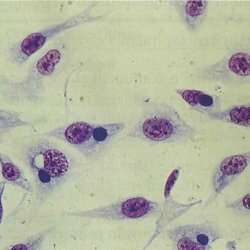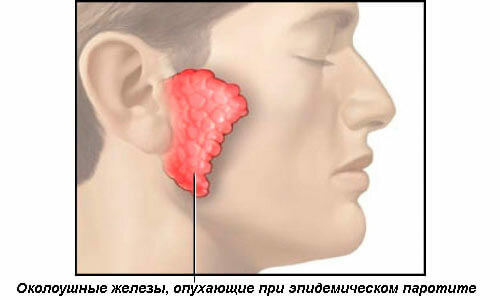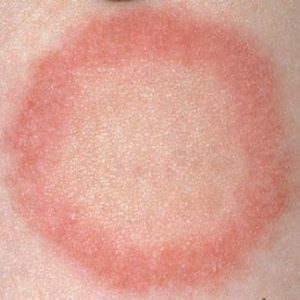Ornithosis: causes, symptoms, treatment
 Ornithosis is an acute bacterial infection, the causative agent of which is the simplest organism - chlamydia( species Chlamydia psittaci).This disease is transmitted by airborne droplets and detrimental to the central nervous system of the person, the liver, lungs and spleen, and is also characterized by severe fever and intoxication of the body.
Ornithosis is an acute bacterial infection, the causative agent of which is the simplest organism - chlamydia( species Chlamydia psittaci).This disease is transmitted by airborne droplets and detrimental to the central nervous system of the person, the liver, lungs and spleen, and is also characterized by severe fever and intoxication of the body.
The main carriers of ornithosis are birds, both wild and domestic, although for the first time chlamydia have been found in parrots. This disease can be called a professional one, as most often people who work in slaughterhouses, meat-packing plants or poultry farms, and pigeons get it. However, there are cases when the transmission does not occur from birds to humans, but from person to person. So, the situation of infection of medical workers who are in contact with people sick with ornithosis is described. In addition, it is noted that outbreaks are most often observed in the autumn and do not carry a mass character.
Causes of Ornithosis Development
How does the process of infection with ornithosis occur? A person, being in the same room as a bird carrying the disease, inhales with the air fragments of fluff or faeces of the animal, in which chlamydia, of course, live. Fortunately, in most cases, infected people are not able to transmit the disease to others, and therefore are not dangerous and do not require immediate hospitalization, as in the case of other infectious diseases.
After chlamydia has entered the upper respiratory tract, with the air flow it rushes further through the respiratory system and reaches the bronchi and alveoli, causing inflammation. The bacterium develops and multiplies directly inside the cell, therefore, in the absence of proper treatment, chlamydia can penetrate into blood cells and be a source of intoxication and damage to many organs and systems, including the central nervous system.
Another way to get chlamydia into the human body is fecal-oral, that is, together with food. In this case, pneumonia does not develop, as occurs in the standard course of the disease.
It should also be noted that, after recovery, a person develops immunity to ornithosis, but is very short-lived and unstable, so there is a possibility of repeated infection. In order to avoid such a development of events, it is necessary to apply various preventive measures. So, an excellent option can be carrying out preventive inspections at poultry farms or slaughterhouses.
Symptomatic
Ornithosis, like any other infectious disease, begins with an incubation period that lasts an average of 1.5-2 weeks. At this time, chlamydia is introduced into various cells of the body and their further reproduction and development. In this case, cell death occurs, as well as poisoning of the infected organism with the products of vital activity of growing bacteria.
There are two types of course of the disease: acute and chronic.
Acute ornithosis can be typical( ie, take the form of pneumonia) and atypical( in which additional complications are possible).
Acute flow is characterized by a sharp increase in temperature to 39 degrees at the initial stage of the disease, as well as general weakness, severe headaches, lack of appetite, runny nose and muscle pain in the back and extremities. After half a week, one can observe the symptoms of pneumonia: severe pain in the chest, usually appearing during inspiration, cough, discharge of purulent sputum. The temperature is either kept at the same level or increases. If the treatment is not started on time, there is a possibility of complications, in which not only lungs, but also other organs can be affected. So, quite often, along with the respiratory system, it is necessary to treat the liver or spleen.
Unfortunately, even after curing a person, a person will feel unwell for a long time. This is due to the residual effect of the products of the vital activity of chlamydia, therefore a complete recovery of the organism can be expected only after 3 months after the initiation of therapy.
Chronic form of the disease occurs in the case when either the disease was not treated at all, or the treatment did not bring the desired result. In such a situation, the development of ornithosis lasts up to five years. The disease is characterized by constantly holding fever and general intoxication of the body.
The most dangerous outcome of the disease can be the possible complications that most often appear due to the lack or ineffectiveness of treatment. These include: hepatitis, acute heart failure, meningitis, as well as neuritis and purulent otitis. The most adverse effects can occur in pregnant women. In this case, the disease can lead to miscarriage.
Treatment of
You can cure ornithosis using a set of medications. Usually prescribe antibiotics, and the scheme of taking the drugs is different depending on the course of the disease. Among them, most often used tetracycline, medikamycin, vibramycin. In addition, to support the immune system, a number of immunostimulants are prescribed: interferon, cycloferon, and others. The entire course of treatment lasts depending on the regimen for taking antibiotics from 7 to 14 days, and in chronic ornithosis can appoint several courses at once.
The most important place should be given to the prevention of this disease. Basically, it boils down to the early detection of carriers of an infectious disease - birds. To this end, sanitary and veterinary supervision of enterprises engaged in breeding birds, their disinfection, as well as the isolation of patients already infected with ornithosis. At this time, a vaccine is being developed against this infection, but before it appears, only the above preventive measures can be the only way to protect against ornithosis.



